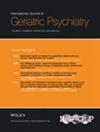Association Between Religious Service Attendance and Depression, Anxiety Among Older Amdo Tibetans
Abstract
Objectives
Religious service attendance has previously been associated with greater levels of well-being, as well as milder symptoms of depression and anxiety. However, few studies have explored this association within the Amdo Tibetan population. This study aims to estimate the association between religious service attendance and psychiatric symptoms among older Amdo Tibetans.
Methods
A cross-sectional face-to-face field survey was conducted in the Tibetan Plateau of China, focusing on older Amdo Tibetans from May 21 to July 26, 2023. The study utilized self-reported data on religious service attendance (never, < 1/week, ≥ 1/week) alongside validated scales, including Center for Epidemiological Studies Depression-8 (CESD-8) and the Generalized Anxiety Disorder-7 (GAD-7), to assess depressive and anxiety symptoms. These instruments demonstrated robust psychometric validity. Generalized linear mixed models were used to estimate the odds ratio (OR) of depression and anxiety associated with religious service attendance, adjusting for potential confounders including sociodemographic characteristics, lifestyle factors, and medical history.
Results
This study included 538 older Amdo Tibetans, among whom the prevalence of depressive (scores ≥ 3) and anxiety symptoms (scores ≥ 5) was 46.10% and 24.91%, respectively. In the fully adjusted models, compared with those who never attended religious services, participants who attended services at least once per week showed significantly less severe symptoms of depression (OR = 0.43, 95% CI: 0.20, 0.96) and anxiety (OR = 0.20, 95% CI: 0.05, 0.75). Moreover, ≥ 1/week attendees (vs. never-attendees) also had lower levels of depression (OR = 0.64, 95% CI: 0.43, 0.96).
Conclusions
Our findings suggest that religious service attendance was associated with lower risks of depression and anxiety among older Amdo Tibetans. This highlights the importance of considering religious and spiritual practices as potential factors in promoting mental well-being, particularly within unique cultural and ethnic contexts such as the Amdo Tibetan community.

 求助内容:
求助内容: 应助结果提醒方式:
应助结果提醒方式:


